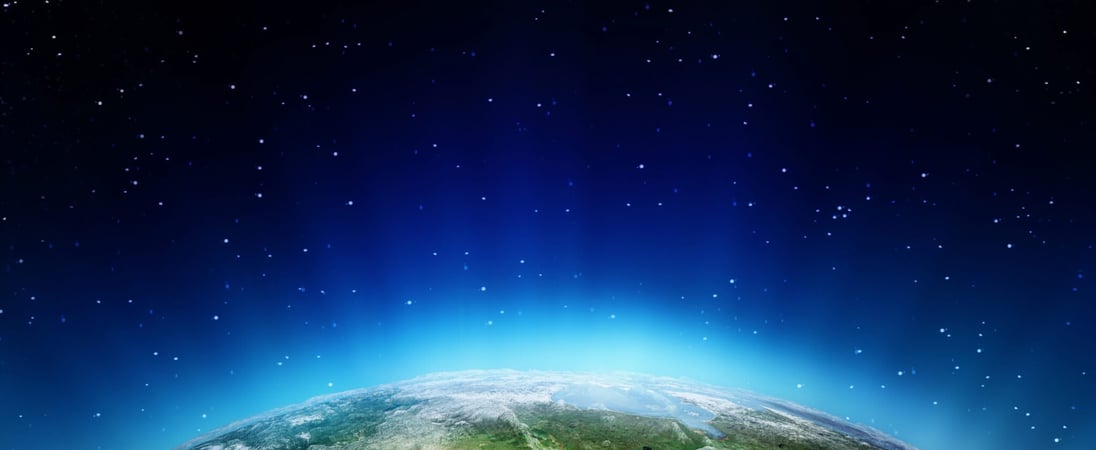
Earth Day
As threats to the Earth grow, so too do the global initiatives that seek to preserve it, whether through volunteer work, donations, or political lobbying.
Earth, due to human activity, is in trouble. The ozone layer is depleting, ecosystems are being lost and people are starving and dying of dehydration. Endangered species are disappearing rapidly, our water and air is becoming increasingly polluted, and weather systems are being pushed to the extreme.
A scary picture indeed, but thankfully one we can all do something about! Earth Day, one of the first global initiatives to protect and conserve the earth, has become an annual event that strives for positive change on a global scale. It aims to inspire individuals, communities, businesses and governments all over the world to take action and help preserve the planet.
Need some inspiration?
Check out these videos for some extra inspiration in getting involved!
History of Earth Day
As the world’s largest environmental movement and the most widely celebrated secular occasion, with over 1 billion people and more than 75,000 partners involved each year across almost 200 countries, Earth Day has gone from strength to strength over the course of its history.
Founder Gaylord Nelson, a former US senator, thought of the idea after witnessing the 1969 oil spill in Santa Barbara, California. Inspired by the vigor of the student anti-war movement, he believed it was essential that energy was shifted to concerns about air and water pollution.
Originally envisioned as a campus teach-in event, Senator Nelson enlisted youth activist Denis Hayes to help organize the first Earth Day in 1970, and the pair opted for 22 April due to where it fell in the academic year, ensuring that the maximum number of students would be able to take part.
Nelson, Hayes and their team were able to spread the message far and wide, including to the national media, and promote events across the US. The occasion was a massive success, with 20 million Americans taking to the streets to celebrate the first Earth Day. They demonstrated in support of the cause, and groups that had previously been rallying around environmental issues separately came together on the day due to their shared values.
The first Earth Day helped put environmental protection on the political agenda and bring about change. That same year the United States Environmental Protection Agency was set up, and soon after various legislation was passed, including the Clean Air, Clean Water and Endangered Species Acts.
It wasn’t until 1990 that Earth Day went global, spreading the message to 200 million people in over 140 countries. By the millennium it had reached more than 180 countries and involved hundreds of millions of participants worldwide. And of course the year 2020 marked the 50th anniversary of Earth Day.
2016’s Earth Day was a particularly special year, as it heralded the United Nations’ adoption of the Paris Agreement. Signed by 175 countries, this international treaty established legally binding targets for tackling the climate emergency, ensuring that as many nations as possible are working together to cut emissions and prevent global warming.
As a day of action, Earth Day aims to promote environmentalism through engagement, activism, education, policy changes and peaceful protest. It has focused on various themes over the years, such as climate change, trees, clean water and a healthy environment for children, and multiple organizations and venues host events that showcase the importance of caring for the environment.
This vital day teaches people about the consequences of their behavior on the places and ecosystems in which they live. And it’s not just about the damaging effects on the environment itself, but also about the impact on people’s health, access to food and water, safety and livelihoods. To get involved, people choose to make conscientious changes such as recycling more, using renewable fuel and conserving water.
Earth Day Timeline
1962
Rachel Carlson releases book Silent Spring
Raising public awareness for the plight of living organisms, Silent Spring makes its way up the New York Times bestseller list and sells more than ½ million copies in at least 24 countries.[1]
1970
First Earth Day is celebrated
After witnessing a massive oil spill in California, Senator Gaylord Nelson from Wisconsin announces the idea of a teach-in on college campuses, choosing April 22 to fall between spring break and final exams to gain as much participation as possible. This bi-partisan event engaged 20 million Americans in working to protect the planet.[2]
1990
Earth Day takes on the globe
Taking Earth Day around the world, just 20 years after the original event the participation increased ten-fold to include 200 million people from at least 140 countries.[3]
1992
United Nations Earth Summit takes place
The United Nations Conference on Environment and Development (UNCED) meets in Rio de Janeiro to address issues of sustainability and provide opportunities for collaboration around the topic.[4]
2000
Earth Day reaches record numbers
In celebration of the new millennium and the 30th anniversary of the observance, Earth Day includes 5000 environmental groups from 184 countries with activities all over the world.[5]
How to celebrate Earth Day
There are a whole host of activities you can get involved in to mark this important occasion, not only around the globe but even in space! The Earth Day website allows people all over the world to find and share events designed to celebrate the day, from presentations and film screenings to cleanups and conservation efforts. This means that Earth Day enthusiasts can join things local to them or on the other side of the planet! And NASA often hosts an event from the International Space Station, for example livestreaming the image of our beautiful earth for all to see.
Another great way to celebrate Earth Day is by learning about what your actions do to the environment and why maintaining the earth’s ecosystems is vital to our survival. There’s a myriad of online resources – articles, quizzes, documentaries and so much more – to help us all find out more about our precious planet and the role we can play in protecting it.
If you feel able, why not donate money via Earth Day’s official website or to another environmental charity such as Greenpeace, the Rainforest Alliance or the Union of Concerned Scientists? Your support will help with a whole range of campaigns and projects, including pushing governments and businesses towards more environmentally friendly policies, preventing damaging practices such as deforestation and mining for fossil fuels and protecting those communities most vulnerable to the effects of climate change. You could also volunteer for local environmental groups and really make a difference where you live.
Above all, this occasion shouldn’t just be about one day, but rather a regular habit! Even the simplest of changes to our lifestyle can make a real difference. Switch to using an eco-friendly search engine, buy fruit and veg from the shop that isn’t wrapped in plastic, and put on an extra jumper rather than turning on the heating.
If you’re serious about the planet, then there’s plenty more you can do to live in a greener, more sustainable way, including powering your home with renewable energy, cycling and walking more and driving less (or buying an electric vehicle), reducing your meat and seafood consumption, recycling your waste, planting wildflowers in your garden for the bees and butterflies, and ensuring that your financial investments, for example, your pension fund, are contributing to green jobs and a green economy. Be sure to spread the word about National Earth Day through social media and let your friends and family know why protecting the earth is essential to you.
Earth Day FAQs
Is Earth Day international?
Yes! Although it is called Earth Day and it began in the US, the day is now celebrated and observed in a majority of the countries throughout the world–at least 193 countries.[1]
How is Earth Day celebrated?
Individuals, groups, organizations and communities can all celebrate Earth Day by raising awareness, participating in sustainability projects, volunteering, making donations and so much more.[2]
Is Earth Day always on April 22?
Yes! Ever since its inception in 1970, Earth Day has been celebrated annually on April 22. The original idea to reach college students made this the perfect time between spring break and finals.[3]
Who created Earth Day?
Although the stage was set at the 1969 UNESCO Conference in San Francisco, the execution of the day can be credited to US Senator Gaylord Nelson who proposed an environmentally focused day for college campuses. The idea grew from there.[4]
Where did Earth Day start?
The first ideas for Earth Day were formulated in the United States and meant to be observed as “teach-ins” on college campuses, but the idea quickly grew and it eventually turned into an international day including most of the countries on the planet.[5]
Also on ...
View all holidaysNational Baseball Day
America's pastime, where a small, round ball sparks exhilarating moments, connecting generations through the love of sport.
National Jelly Bean Day
Put together a colorful bag of your favorite flavors, or be brave and take the risk of vomit and bogey-flavored beans in Bertie Bott’s Every Flavor Beans.
National Beagle Day
Floppy ears and soulful eyes, the beagle is man’s best friend, and a valuable hunting dog. Pamper your beagle, or join in an event like the Beagle Walk.




